The research cult as awakening path
Surrendering to the psychoactive power of my friend's minds
“It is possible the next Buddha will not take the form of an individual. The next Buddha may take the form of a community.”
–Thich Nhat Hanh, October 1993
“... If you do still believe in love, then you can create unbreakable bonds between individuals, and levels of trust that are really high – and therefore, forms of coordination and organization that can actually outcompete those forms of organization that are based on mere contract. The people who are most confused, who are driving the world towards its end, are actually not capable – given their worldview – of creating organizations as powerful as the organizations that could be created by this other class of people. This class of people who are seeking the value of love, friendship, and trust as primary. In the battle between devils and angels, the angels win because they can cooperate.”
–Zak Stein, October 2022
More than thirty years ago, the Vietnamese Zen master Thich Nhat Hanh made a gentle suggestion to a gathering of more than two thousand people in Woodacre, California. His idea – the next Buddha may be the sangha – has now been repeated so often that it carries, at least for me, the feeling of both cliche and prophecy.
Regardless of how well-worn those words may be, they neatly summarize the North Star of my life’s (networked) work. What does it take to become a collective body of integrity? What might it be like to receive teachings not from a solitary guru, but from a trusted community of people who are deeply accountable to each other?
My collaborators and I are practicing in the lineage called collective intelligence, or collective wisdom, or even “we-space.” But those descriptors are too narrow, and too neat, for the process that is actually unfolding. Too narrow because we are attempting to go beyond stylized practice and create concrete networks of trust; too neat because the human shadow material we have encountered along the way has demanded that we enter an alchemical fire.
This essay is the first of a series which tell personal stories that come from the inside of this effort.
“I am grieving because I know that when I leave this gathering and go home, the cognitive and relational capacities I have in this moment will not come with me.”
—Nathan Snyder, October 2023
“I can’t even think alone anymore.”
—Ivo Mensch, August 2023
In August of 2023, I spent two weeks in Bergerac, France with a group of people gathered from around the world by the Respond Network. We were being called ‘guides’: facilitators and emerging teachers whose offerings were aimed at cultivating greater wisdom within mainstream culture.
As the gathering began, I was determined to become friends with Cheryl and Ivo. Before arriving, I’d studied their work with great interest: reveling in Cheryl’s Stoa presentations, carefully annotating Ivo’s latest article. Though they didn’t know each other well, I felt strongly that they were working on intimately related threads — and that those threads were braided with my own soul work. I chatted them up at breakfast and drew them into nerdy debriefs. I hosted them for dialogue sessions alongside our friend Daniel.
Sparks flew. Before long, a crew had formed, drawn together by the currents of our isomorphic vows. We called ourselves the Yin Research Cult.
The Yin Research Cult was a sexy trickster – the kind of phenomenon that can only arise if it has an existing structure to rebel against. We turned away from the institution-building goals of the Respond gathering, and toward the esoteric realm. We favored the aesthetic of the dark feminine, playfully drawing red dots on our palms as an initiation rite. We experimented with the possibility of acting as a kind of three-headed oracle, providing ritual ‘soul consultations’ to colleagues who requested them.
We were, it must be said, extremely turned on by each other. The flame of creative eros had been lit, and by the time we parted ways, we were making shared Spotify playlists and planning our next rendezvous. But we were a research cult, not a sex cult. We were destined for a different form of intimate contact.
In the deepening of our collective practice, I learned the intimate contours of Cheryl and Ivo’s minds. They had a predilection for entering black holes; in our triad, I was the one ‘holding the perimeter.’ At times, as we entered into presence together, I’d feel the world tilt on its axis. I scrambled energetically to draw myself back from the void. I didn’t really know what I was doing, but Cheryl was tracking it. Someone, she later explained, had to keep us from going over the edge. Once, after a talk we gave together, she said something to me like: “Whew! That was close.”
At the same gathering, I met Nathan Snyder. Although Nathan left the gathering early, we continued to trade daily voice notes as I continued on with the retreat. Talking with him—a brilliant, masculine Enneagram 8 with a powerful capacity for abstract thought — felt familiar and foreign at once. His warmth, sensitivity, and ambition felt like my own. But when I attempted to scale the sheer cliffs of his propositional and conceptual world, I experienced a vertigo that both thrilled and frightened me.
Nathan, too, was enchanting. Part of me wanted to move into his guest room in Connecticut, reading all his books and talking for hours. But our fate was not to cohabitate. Instead, we were to walk a path of mutual shadow work that would have a profound impact on my psyche.
Coming into intimate contact with these minds — “perceptually composed,” as Nathan put it, so differently from my own — began to change me. As I played tourist in the foreign lands of their subjectivities, I saw that I was fettered and bound by constraints of perception that my friends did not share. I was having the basic insight that all travelers have: There are other ways of experiencing the world.
If my consciousness, my citta, my heart-mind, was a living being, it seemed to be undergoing a kind of transformative process. At times, it felt like surgery: my friends’ minds were working on mine with flashlight, scalpel, scissors, thread. But the surgery metaphor wasn’t actually right. We were, to be more precise, transforming each other through a mutual process of ingress.
Bonnitta Roy writes:
… Instead of perception giving us the feeling that objects are “out there” being perceived, we get the distinct and clear impression that the objects are being invited to indwell in our own being. There is a continuous flow from self to world, but the more precise word is “flux” since every ingress is a transformational moment for the self both as subject of experience and subject to the experience of the world.
I remember walking along the river in Bergerac, freshly provoked by Nathan’s latest voice note. My senses felt unshackled from their usual posture. Free energy circulated in my system faster than ever before. I could practically see the pixels of my visual reality moving, like steam rising from a boiling kettle.
I knew this state of mind. I’d experienced it just a few months prior, in the final days of an 80-day solitary meditation retreat. After 65 days of concentration practice, my teacher had transitioned me to a Ch’an Buddhist method of inquiry, or huatou. In my tiny cabin, in the depth of a Northern Vermont winter, I fervently asked myself the question: What is not made?
What goes beyond all construction, all volition?
What is the unfabricated?
What is not made?
What is not made?
What is not made?
As I sat and sat, and asked and asked, the world began to change. Master Sheng Yen describes the fruit of this practice as ‘the great doubt’:
When we practice on a huatou we are trying to find out “What is there?” before the application of any literal or symbolic description. In the beginning of the practice, there is no doubt to speak of. It is only when you are practicing this method very well that you will generate a doubt. When the practice grows to be more and more powerful, the doubt becomes a great doubt. At this point you are no longer aware of your body, of the world, or of anything. There is only one thing left, and that is the question, the great doubt.
I was surprised to find that engaging in shared inquiry with my new friends could have such a penetrating effect on my mind. But I shouldn’t have been surprised. After all, at the heart of most philosophy, science, and spirituality is the practice of the question.
The Yin Research Cult had questions, too. In our years of work at the edges of spiritual innovation, we had each found ourselves haunted by a question that asked itself over and over again.
Cheryl’s was: What does true collaboration look and feel like?
Mine was: How do we become the vessel that the future can burst through?
Unlike huatou, these questions were not designed to take the questioner beyond all mental concepts. And yet, as I have lived into these embodied inquiries in the years since Bergerac, I have indeed encountered a kind of great doubt. Some of the concrete elements of the questions – collaboration, vessel, future – have died and been reborn. The subtler elements – look, feel, become – have become more nuanced, too.
But most importantly, I am no longer sure: Who is we?
Who is we?
Who is we?
Who is we?
Who is we?
Deconstruction and insight don’t need to be practiced in solitude. Becoming profoundly entangled with the mind of another, and asking the questions that inevitably follow, can bring about a fundamental shift in identity.


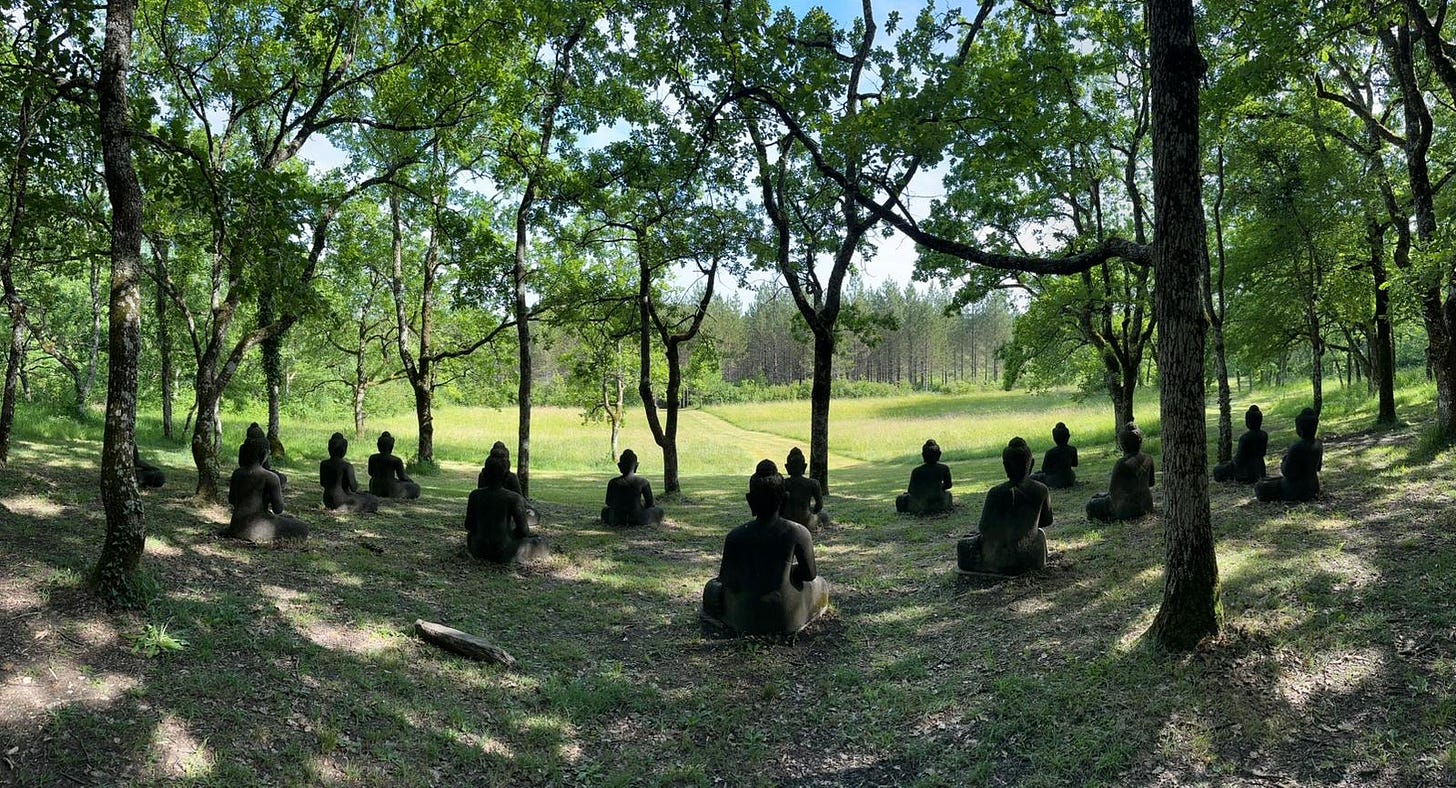
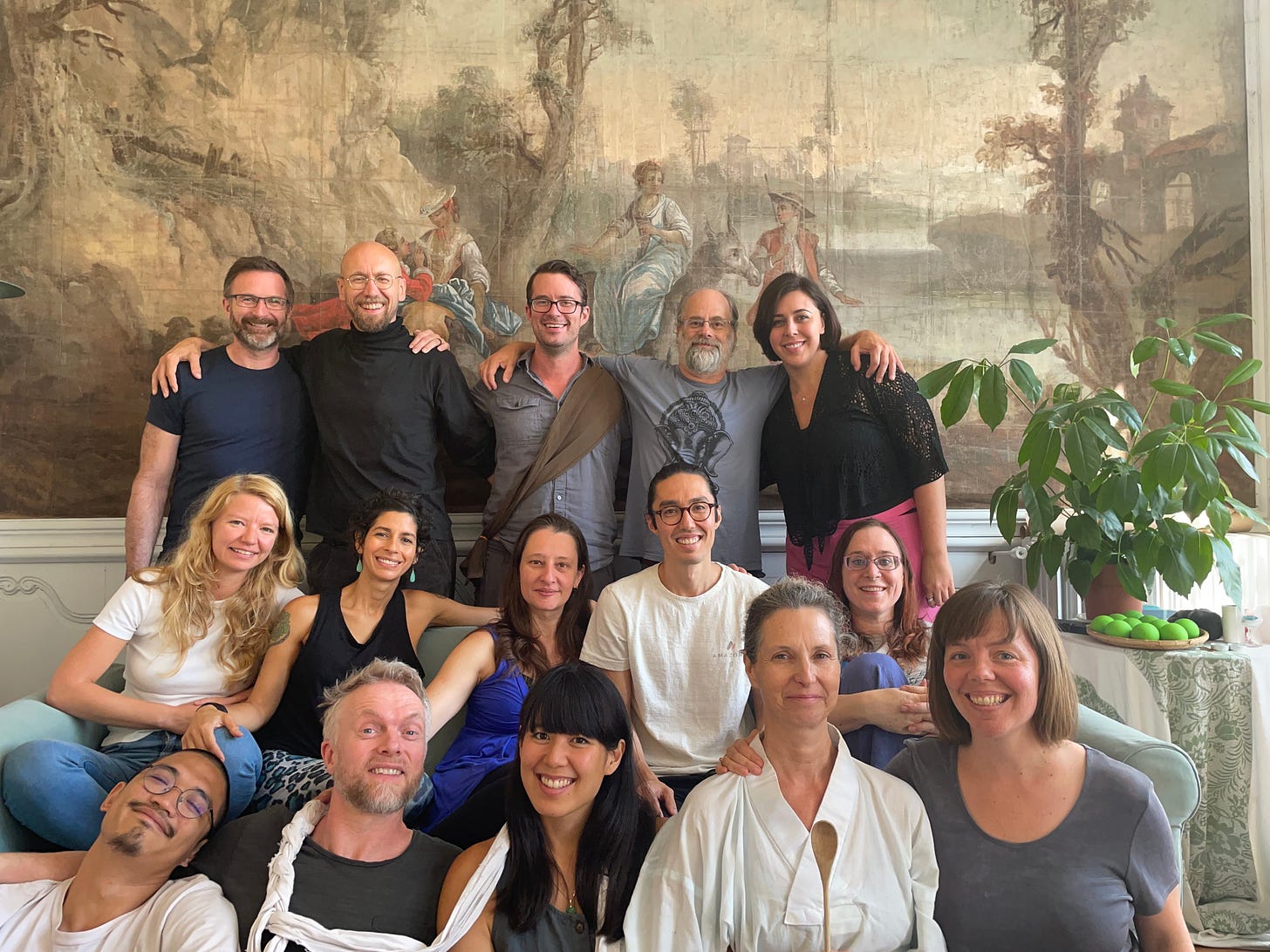
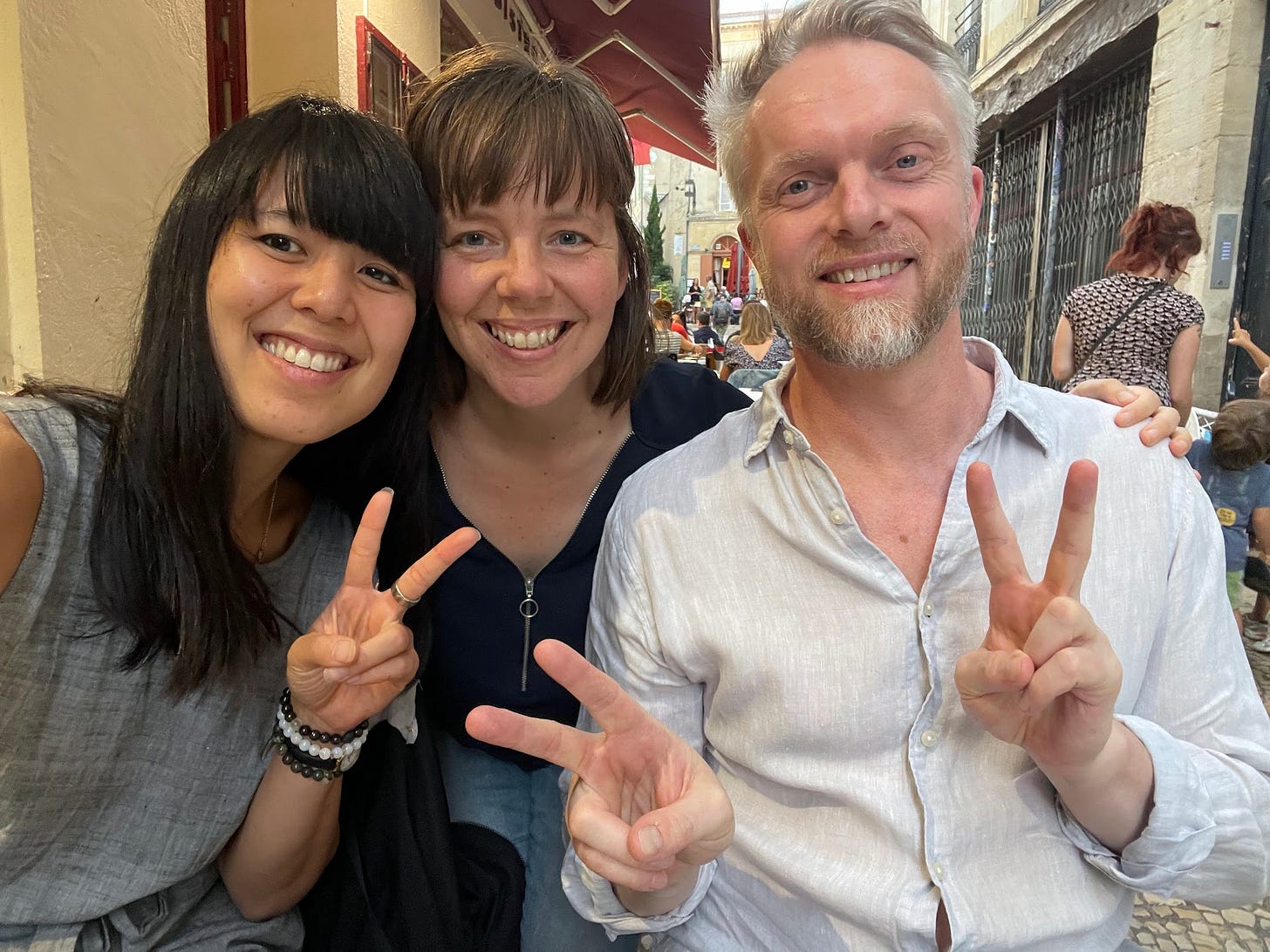
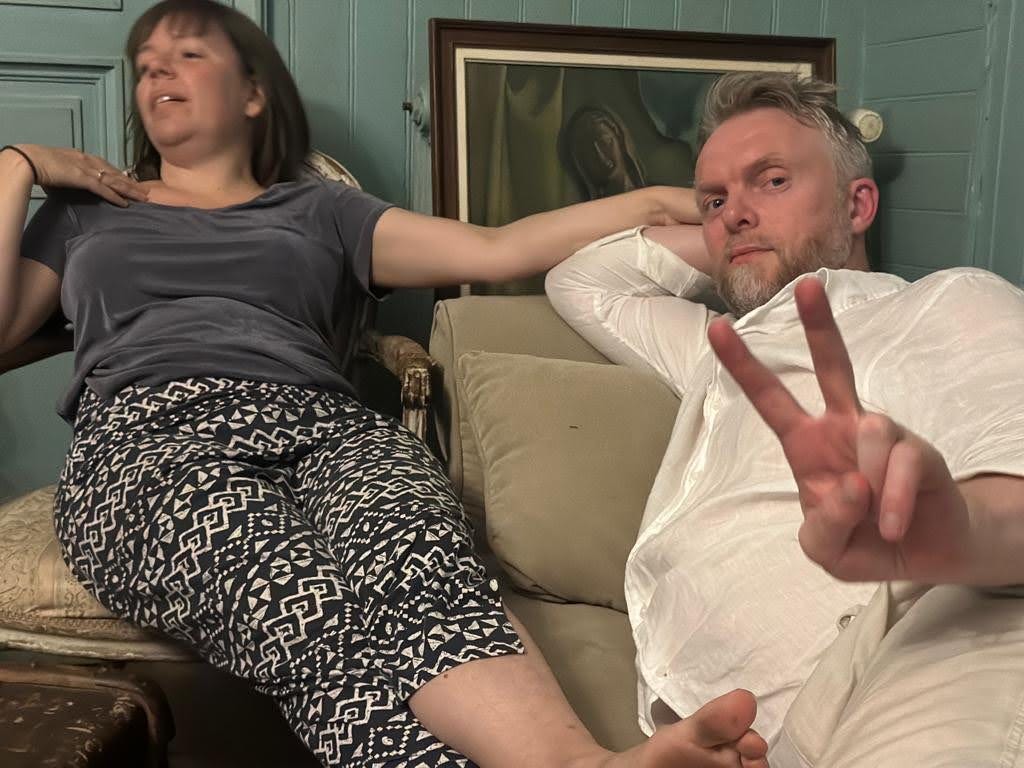
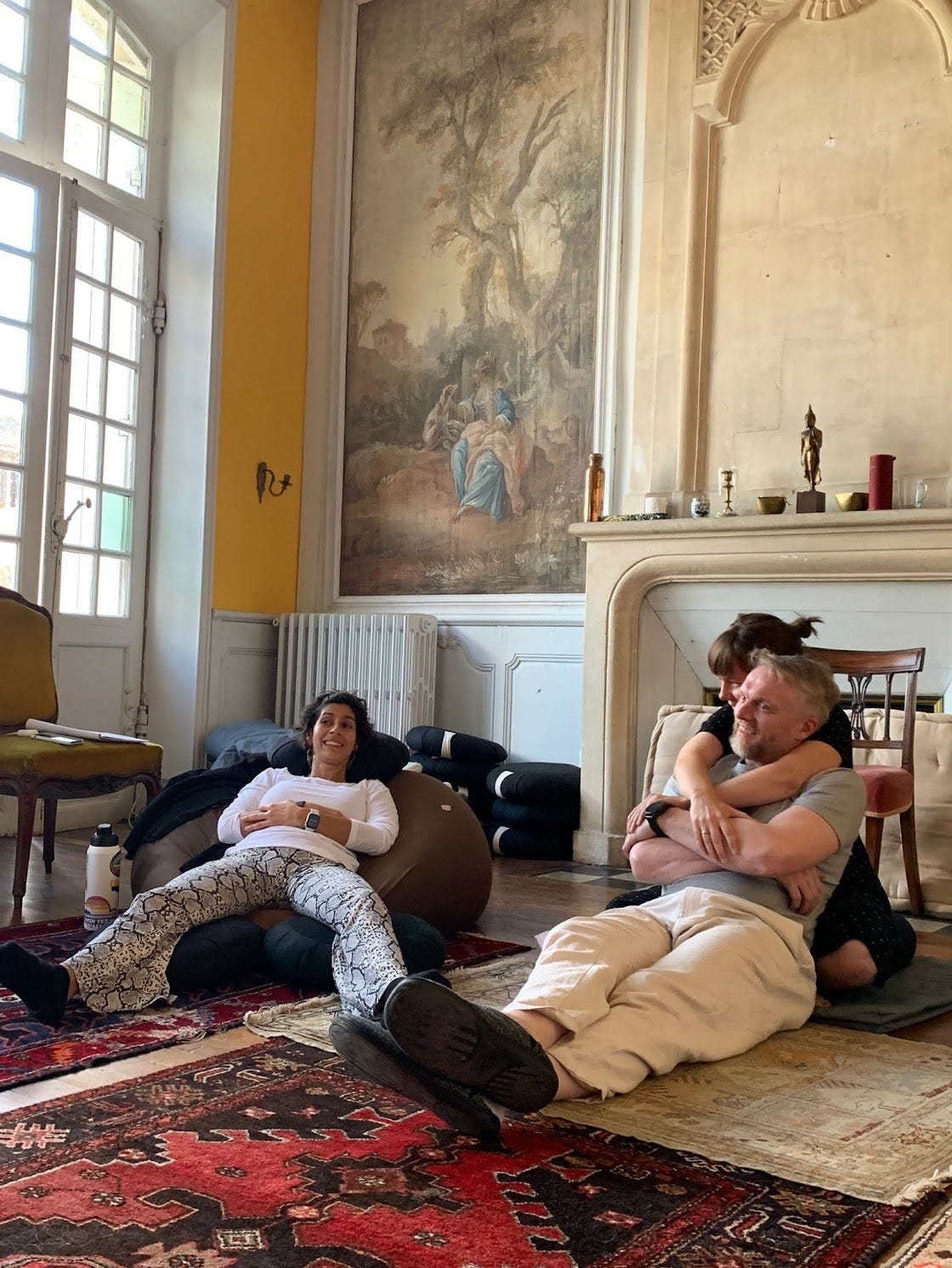
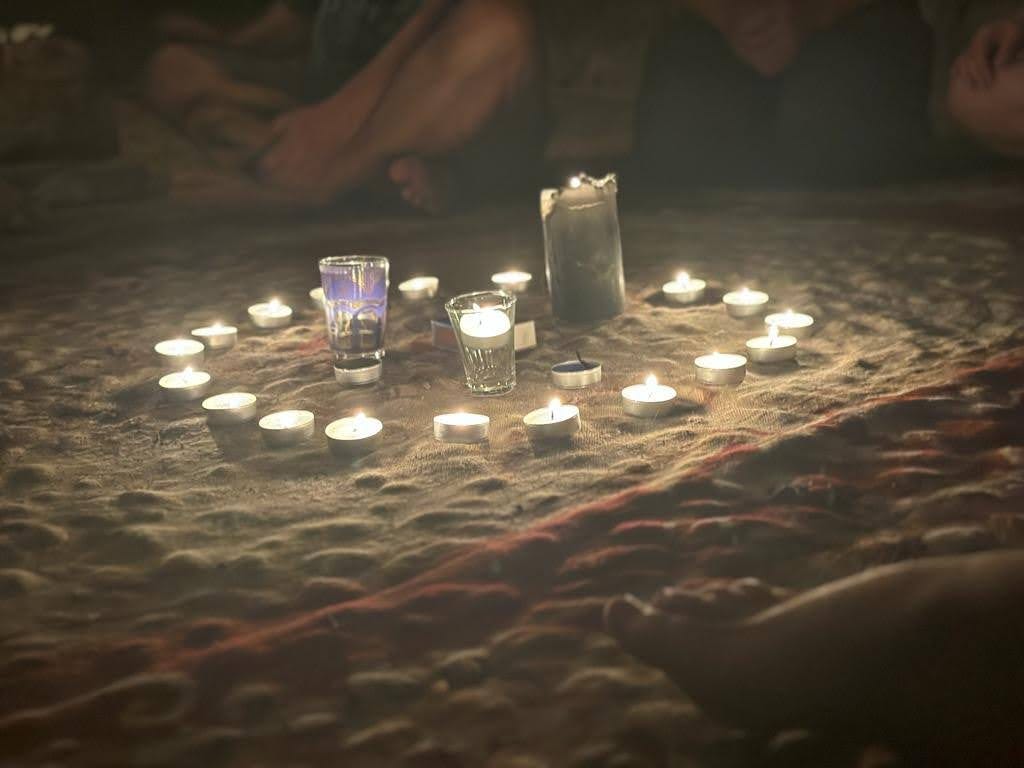
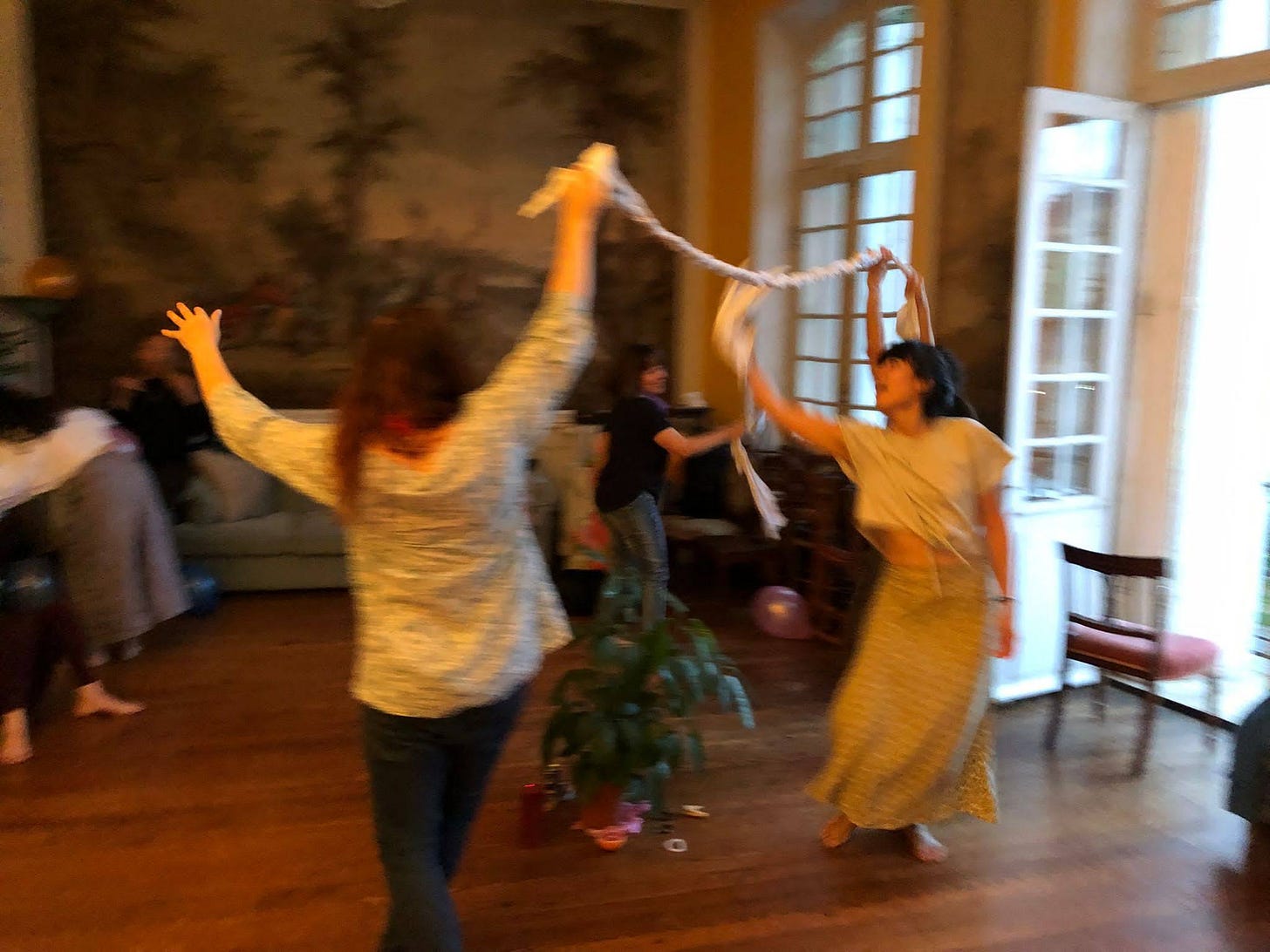
Love all of this so much.
Yeeessss...Love hearing more about the path that has lead to our current, highly generative entanglement, my dear. May our journeying with these questions turn us inside out and upside down until we are asking the next questions or have no more need for words. <3